A Look Inside ‘Sunday Morning’, And CBS Studio 45
A Look Inside ‘Sunday Morning’, And CBS Studio 45
This is a story I posted a few days after my visit to The CBS Broadcast Center in early May. I don’t know if this “share” will include the great comments and add on’s from the original, so I’m pasting in the link just in case. Enjoy and share! -Bobby Ellerbee
https://www.facebook.com/permalink.php?story_fbid=673957542641798&id=189359747768249
This has always been one of my favorite shows. There is a line in a Lionel Richie song that says it all…”easy like a Sunday morning”, and that’s just the way it feels. Actually, that’s the foundation it was built on; to be like the magazine section of the Sunday paper, taken in at a leisurely pace with your morning coffee.
The show has been on since January 29, 1979 and that’s proof that the ‘Sunday Morning’ formula works. The program was created by Robert Northshield and it’s original host Charles Kuralt. The current host of the show is Charles Osgood, who took over duties from Kuralt upon his retirement on April 3, 1994, and has since surpassed Kuralt’s tenure as host. Both are perfect hosts.
This set is located directly across from something we saw here yesterday, the ‘Inside Edition’ greenscreen set in Studio 45 at the CBS Broadcast Center, which is a just over 3000 square feet. When ’60 Minutes’ first began, it shared space with ‘Captain Kangaroo’ and I think it was in this studio.
I’ve always wondered about the show’s trumpet theme. I had always thought the opening was played on a coronet which is smaller than a regular trumpet, but it’s actually played on a piccolo trumpet, which is smaller than a cornet.
The show’s theme is the trumpet fanfare “Abblasen”, attributed to Gottfried Reiche. A recording of the piece on a baroque trumpet by Don Smithers was used as the show’s theme for many years, until producers decided to replace the vinyl recording with a digital of a piccolo trumpet by former ‘Tonight Show’ musical director Doc Severinsen. The current version is played by Wynton Marsalis. I can hear it now, can you?
‘CBS Sunday Morning’…Seems Like Only Yesterday, And It WAS!
‘CBS Sunday Morning’…Seems Like Only Yesterday, And It WAS!
Thanks to Craig Wilson, here’s a nice shot of yesterday’s show in CBS Studio 45 with Charles Osgood. The floor director is Mark Dicso with cameraman Allan Brown. With this in mind, the next post here today is a ‘Sunday Morning’ story I did in May on my visit to to New York. Enjoy and share! -Bobby Ellerbee
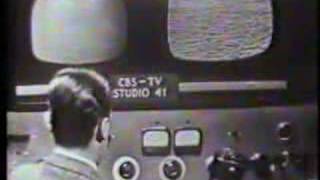

‘See It Now’ Debut With First Ever Commercial Coast To Coast Feed
‘See It Now’ Debut With First Ever Commercial Coast To Coast Feed
Today, when news breaks, we can get live pictures from almost anywhere in the world almost instantly, but this was not always the case and we take that ability for granted.
Here’s a reminder of the incredible effort it took just to get live pictures from coast to coast, memorialized in this first broadcast of ‘See It Now’ with host, Edward R. Murrow. Murrow is broadcasting live from the CBS Studio 41 control room in Grand Central, with the legendary Don Hewitt behind him directing.
On September 4, 1951,President Harry S. Truman’s opening speech at The Japanese Peace Treaty Conference in San Francisco was broadcast across the nation, marking the first time a television program was broadcast from coast to coast. The broadcast, via then-state-of-the-art microwave technology, was picked up by 87 stations in 47 cities, according to CBS.
On November 18, 1951, Edward R. Murrow on the ‘See It Now’ debut presented the first live coast-to-coast commercial television broadcast in the US, showing a split screen view of the New York Harbor and the Golden Gate Bridge in San Francisco.
This east – west link was made possible by AT&T’s new microwave radio-relay skyway, the first facilities to transmit telephone, radio and television across the United States by radio rather than wire or cable.
The new route, at the time the longest microwave system in the world, relayed calls along a chain of 107 microwave towers, spaced about 30 miles apart. AT&T spent over three years building it at a cost of $40 million.
This historic debut of ‘See It Now’ went off without a hitch. The New York Times reported that “the image reproduced on screens in the New York area, nearly 3,000 miles from the scene, had excellent clarity and compared favorably with programs of local origin. The contrast was of first-rate quality and there was no distortion.” Enjoy and share! -Bobby Ellerbee
The Theater And Secrets Of…’I’ve Got A Secret’
The Theater And Secrets Of…’I’ve Got A Secret’
IGAS began at CBS Studio 59, The Mansfield Theater at 256 West 47th Street, which is now the Brooks Atkinson Theater. Below are photos of the theater in the CBS days and now. Studio 59 also hosted another huge CBS hit…’What’s My Line’ and from that show, came IGAS. Here’s the full story as detailed by Mark Evanier on his great Old TV Tickets.com site. http://www.oldtvtickets.com/
‘What’s My Line’ was one of the most popular shows on TV when two out-of-work comedy writers, Howard Merrill and Allan Sherman, created a not-dissimilar show which they called ‘I Know A Secret’. They took their creation to the producers of WML, Mark Goodson and Bill Todman, who immediately informed them it was a copy of their program. Sherman, displaying the ingenuity that would later catapult him to stardom as a singer of song parodies, replied that “People are going to start imitating your show whether you like it or not. You might as well do it and make the money.” Amazingly, Goodson and Todman saw the wisdom in this and bought the idea.
When ‘I’ve Got A Secret’ went on CBS a year later, it was an immediate disaster, in part because Goodson-Todman had tried too hard to differentiate it from ‘What’s My Line’. It had an awkward courtroom set in which the panelists would walk up and interrogate the contestants seated in a witness stand. After the first broadcast, Goodson ordered the set scrapped and a new one built which would be a mirror-image of the WML set. Also after the first broadcast, one of the show’s two sponsors cancelled so for the remainder of its first season, Secret only aired every other week, alternating with ‘Racket Squad’.
By the end of the year, the producers had gotten most of the bugs out of IGAS and it built up enough of a following to return to weekly status. The show had many things going for it. The program staff (mainly Allan Sherman, until he got himself fired in 1958) was fearless about trying different things and taking risks. On WML, the panel was prim and proper and dressed in tuxedos and evening gowns…and if the contestant’s secret occupation was that he shot apples off someone’s head, you never got to see him do it. On IGAS, the game would be followed by him shooting an apple off some panellists noggin. The show, though broadcast live, was willing to be wildly unpredictable with its odd stunts and clever “secrets.”
The producers also managed to eventually assemble a great panel, anchored by Bill Cullen and Henry Morgan, two of the wittiest men in television. They were good opposites: Cullen was cheery and optimistic; Morgan was acerbic and if something on the show was silly, likely to say so. The women changed from time to time but included Jayne Meadows, Faye Emerson, Betsy Palmer and Bess Myerson, all of whom were quite charming. Best of all, the show had Garry Moore as its host. A great ad-libber, he could handle any disaster…a fact which no doubt encouraged the producers to try more daring segments. Moore did a terrific job of keeping the game moving and setting up the panelists to be funny. It all made for a great weekly party, right up until 1964.
That year, CBS programming was in the hands of a man named Jim Aubrey who was known for his ruthlessness. “The Smiling Cobra,” as some called him, cancelled The Garry Moore Show, the other show Moore was doing for CBS, in such a nasty confrontation that Moore decided to also give up the game show and retire.
Steve Allen was selected as his replacement on IGAS and he kept things afloat for three more seasons…but the chemistry wasn’t the same. Allen dominated the show more than Moore had, and you could sometimes sense that he and Henry Morgan weren’t getting along well. Also, since Steverino lived in California and commuted to New York to do the program, they began doing two shows every other week — one airing live that night, one taped to air the following week. -Mark Evanier
Enjoy and share! Bobby Ellerbee
‘I’ve Got A Secret’…Backstage Video #1, 1957
‘I’ve Got A Secret’…Backstage Video #1, 1957
This is the first of several backstage videos from IGAS that I’ll be posting here this week. It opens on the empty stage of CBS Studio 59 which is also known as The Mansfield Theater at 256 West 47th Street.
By the 2:00 mark, the stage will be completely set for the show…actually, the did it in :17 seconds. One surprise to me is that Gary Moore’s desk is on the left side of the stage…I had always thought he was on the right and the panel on the left.
As you’ll see on this Fifth Anniversary show, they have quite a talented crew, as many of them will perform for us. Cameraman Lee Tanner is, to me, the best dancer, but there is quite a range of talent here which makes for a better crew.
I was going to add the detailed drawings and specs of Studio 59 that I have from the 1961 CBS Studio Book, but when the show moved to Studio 52 in 1960, CBS gave up the lease. They had used the studio from 1950 till 1960. In September 12, 1960 it became The Brooks Atkinson Theatre and is still in use as legitimate theater. Enjoy and share! -Bobby Ellerbee
https://www.youtube.com/watch?v=3Pah5FDfcjA
(1) Eddie Mendelson, studio supervisor: “I auditioned Bing Crosby and told him he couldn’t sing (1924).” (2) Harvey Vincent, usher, sings a duet of “You’re J…
Old And Rare…NBC Studio 3H, 1936
Old And Rare…NBC Studio 3H, 1936
Taken in America’s first television studio, the contract for the RCA Pavillion at the 1939 World’s Fair is signed on a live broadcast. From left to right are NBC President Lenox Lohr, RCA President David Sarnoff and for the Fair Committee, Grover Whalen.
In late 1935, RCA converted NBC Radio Studio 3H to television use. It was equipped with three Iconoscope cameras and this is one the first three studio cameras ever made. Enjoy and share! -Bobby Ellerbee
Final SNL Rarity…The 8H Announce Booth
Final SNL Rarity…The 8H Announce Booth
HAPPY 40TH ANNIVERSARY SNL!
If you are standing on the SNL homebase stage, the announce booth would be on your right, up under the bleechers. Although the interior of the booth has changed over the years, the main occupant didn’t until last month when we lost Don Pardo. This is where Daryl Hammond will be later tonight when he announces the show.
Actually, Don had not been in this booth for several years as he recorded his parts from his home in Arizona. He was there from the start but missed Season 7 after Dick Ebersol took over for a season and Lorne Michaels had stepped away from the show temporarily. Below in the Comment section, I’ll add another photo of Mr. Pardo in this booth from the 1976 season. Thanks to Dennis Degan for the photo. Enjoy and share!
-Bobby Ellerbee
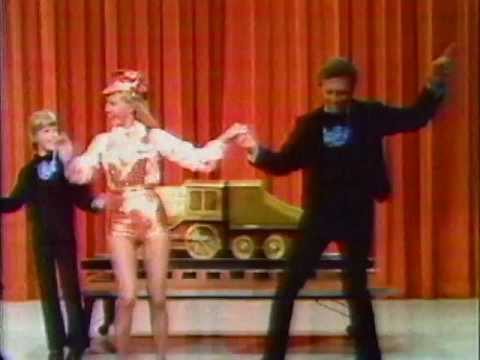

The Original Saturday Night Live With Howard Cosell, ABC
More SNL Rarities…The Original SNL With Howard Cosell
You may be surprised to know that the original ‘Saturday Night Live’ on ABC had more in common with SNL than just the name! It also had “The Prime Time Players” which were Bill Murray, Brian Doyle-Murray, and Christopher Guest!
As we celebrate the 40th Anniversary debut of the 90 minute late night sketch show on NBC, we have to remember that in the beginning the show as titled ‘NBC’s Saturday Night’.
‘Saturday Night Live’ would have been a much better name, but that title was already in use at ABC. Below is a rare clip of the show’s opening with host Howard Cosell. Fortunately for everyone, the show only aired for 18 weeks. It was actually canceled just three weeks into the run, but ABC kept it on to fill the hole in it’s schedule.
ABC’s show ran from September 1975 till January 1976 and was produced by Roone Arledge. The show was later remembered by its director Don Mischer as “one of the greatest disasters in the history of television”, largely due to the fact that Cosell and Arledge, both veterans of sports broadcasting, were entirely unfamiliar with comedy and variety programming.
The show taped 15 new episodes at The Ed Sullivan Theater (see ticket in the Comment section) and it was Arledge’s idea to try and recapture the family show appeal of Sullivan who had been off the air for about three years.
The premiere episode featured celebrity guests Frank Sinatra, Shirley Bassey, Paul Anka, Siegfried and Roy, the cast of the Broadway version of The Wiz, tennis pro Jimmy Connors, and John Denver. The episode’s musical guest was the Bay City Rollers who performed live via satellite from the UK.
The shows also featured Bill Murray, Brian Doyle-Murray, and Christopher Guest as regular comedy performers, dubbed “The Prime Time Players”. Later, when ‘NBC Saturday Night’ was granted use of the SNL name by ABC, we also got “The Not-Ready-For-Prime-Time Players” which ironically also counted the three “Prime Time Players” as cast members over the years. Enjoy and Share! -Bobby Ellerbee
https://www.youtube.com/watch?v=RS2BtthZOug
This is from the original Saturday Night Live, hosted by Howard Cosell, Mark Wilson had just won his second Magician of the Year awards, and finished his Las…
SNL Rarities…Jim Henson’s Notes From The Debut Show
SNL Rarities…Jim Henson’s Notes From The Debut Show
It’s a little surprising and most don’t know that The Muppets were a part of SNL that first year, but they were and I guess the exposure paid off as they left the next year to start their own show. Enjoy and share! -Bobby Ellerbee
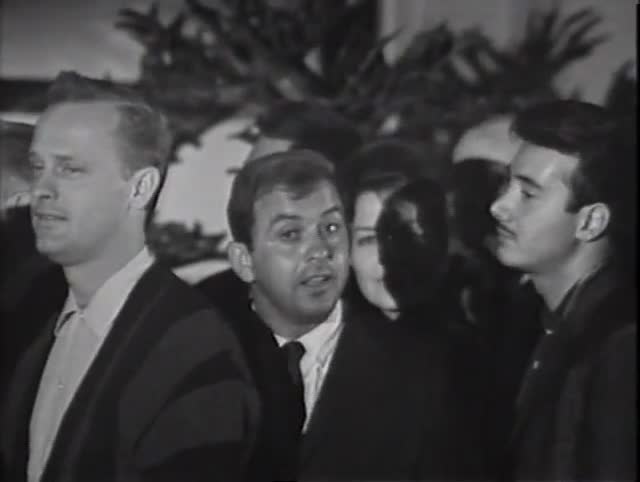

Images From The Great RCA TK60…NBC Burbank, 1963
Images From The Great RCA TK60…NBC Burbank, 1963
After posting the photo earlier today of my TK60, I wanted you to see the pictures these cameras made. This is black and white at it’s best, only rivaled by the Marconi Mark IV. We’ll see that and Mark IV images tomorrow.
This 2 minute clip is the opening of a Bob Hope special shot in what I think is Studio 1 at NBC Burbank. At 1:40 we get to the backstage shots including a TK60. Notice that there are RCA TK41s in the background. This is because Bob Hope, who produced his shows for NBC on his own dime, found it cheaper to shoot in black and white.
The shots of the audience from the stage are as crisp and clear as you could ask for from a tube camera. Enjoy and share! -Bobby Ellerbee
http://aliquippa.tumblr.com/post/34261758536/behind-the-scenes-at-nbc-burbank-1963
Aliquippa • Behind the scenes at NBC Burbank, 1963.
Behind the scenes at NBC Burbank, 1963.
October 10…A Big Day For Color in 1950 And 1964
October 10…A Big Day For Color in 1950 And 1964
On this date in 1950, the FCC approved the CBS Field Sequential Color system effective November 20. CBS had promised 20 hours of color programs a week within two months. This was the opening round of a long hard fight that RCA would eventually win with their Dot Sequential Color system.
On this date in 1964, NBC aired the opening ceremonies of the 1964 Summer Olympics in Tokyo in color. It was the first live color TV program to be transmitted to the U.S. by satellite. Only the opening ceremonies were in color, the events were all telecast in black and white to the US using Syncom 3, the first geostationary communication satellite. This was also the first time that Olympic games could be televised live to all parts of the world. As a side note, Ikegami debuted their first color cameras at these games on Japan’s NHK network. Enjoy and share! -Bobby Ellerbee
More Of The Eyes Of A Generation Collection…
More Of The Eyes Of A Generation Collection…
On the left, an RCA TK42 and on the right, the last RCA monochrome studio camera, the TK60. Both have a 5 inch Image Orthicon inside. That I know of, there are only 15 TK42s left and only 3 TK43s, which is the same as the TK42, but with an external lens. Enjoy and share! -Bobby Ellerbee
The Uncropped, Hi Res Version…
The Uncropped, Hi Res Version…
Yesterday I changed one of the profile pictures on this page. Here is the original that shows from left to right, the nose of an RCA TK10 from WGN, an RCA TK11/31, an RCA TK60, my RCA TK41C, an RCA TK44 and up top is the Marconi Mark IV.
There are 10 more cameras on display in this room and 80 more in the garage, but 70 of those are ENG cameras. If you like this, I’ll post more soon. Enjoy and share! -Bobby Ellerbee
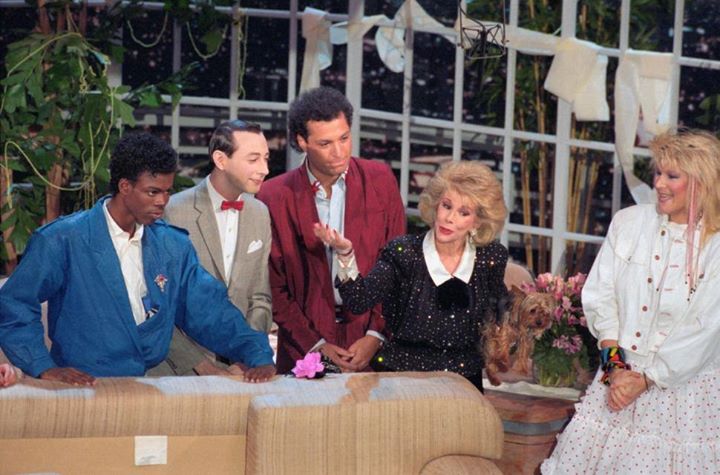

The Last Joan Rivers Late Show On Fox…
The Last Joan Rivers Late Show On Fox…
Below is a photo from the last night of ‘The Late Show With Joan Rivers’ which aired on May 15, 1987. The final guests were Chris Rock, Pee Wee Herman, Howie Mandel and Wendy O. Williams. Joan wore the dress she wore on the debut show.
This was Chris Rock’s first time on television. As for Pee Wee Herman, he had been on the debut show, just five months earlier but what a hard and hellacious five months they were for Rivers.
After a moderate start, ratings for the talk show soon sagged which was quite upsetting to Fox who had chosen this Late Night show to launch their new network. The prime time launch for the network was scheduled for April 5, 1987. The ratings struggles made it hard for Fox to attract affiliates for its primetime launch and tensions were high.
A month or so before the final show in May, Joan’s husband Edgar Rosenberg, who was the show’s producer, was fired by Fox. Shortly after, he had a nervous breakdown and in August of ’87, he committed suicide. In tapes he left behind, he said he blamed himself for the split between Joan and Johnny Carson and urging her into the Fox venture.
The behind-the-scenes relations between Rivers and network executives quickly eroded, and Rivers was fired. For the final show, which aired May 15, 1987, the set was trashed with toilet paper, slime, and shaving cream. Good For Joan! -Bobby Ellerbee


October 9, 1986…’The Late Show With Joan Rivers’ Debuts On Fox
October 9, 1986…’The Late Show With Joan Rivers’ Debuts On Fox
Here is the rare video of that first show with David Lee Roth, Pee Wee Herman, Elton John and Cher. In the story, some surprises I had never known about till now. Read on!
We all know that the Fox announcement of the show caught Johnny Carson by surprise and caused him never to speak with Joan again, BUT…as you will see, Rivers had some pretty good reasons for playing her cards close to her chest.
Rivers had been Carson’s permanent guest host since 1983, and as 1986 neared, some executives at NBC thought it was possible that Johnny Carson would retire after reaching his 25th anniversary on October 1, 1987, as it was such a logical cut-off point. In the spring of 1986, a confidential memo went out to top NBC executives listing about 10 possible replacements in the event of Carson’s retirement. Rivers was shocked to see that she was not on the list.
In an article she wrote for People Magazine, Rivers said that NBC offered her only a one year contract in 1985 as permanent guest host while Carson’s contract had been renewed for two years, which signaled to her that her future was uncertain as her previous one year contracts had run the same length as Carson’s. In addition, Rivers noted numerous snubs from NBC executives over the years, such as not being invited to the annual Carson party until recently, and taking the fall for a controversial joke that management approved during rehearsal.
Rivers had received higher-paying offers from other networks in prior years but declined them out of her loyalty to Carson, but in 1986 as NBC was unwilling to give assurances on her future and negotiations were fruitless, this was the impetus for Rivers to seriously consider the Fox offer.
Fox was looking for a host for a late-night talk show for the network’s launch in October 1986 and offered Rivers the job at a salary higher than what NBC was paying. She accepted, and Carson was blindsided by the news when he saw the press conference on television.
Carson was furious and said that he felt betrayed by Rivers – not because she dared to compete with him, but because she was not honest with him beforehand about her intentions and did not ask him for advice and his blessing.
For her part, Rivers was adamant that her problem was with NBC and not with Carson, who was like a father figure to her. She stated that she didn’t want to tell Carson before the announcement was made because she was afraid Fox would cancel the deal if word leaked out. She had previously been ordered by Carson’s producers and lawyers not to go to him with her problems, as they kept Carson completely insulated since he was a major source of NBC profits. Carson had been completely unaware of Rivers’ problems with NBC.
In the next post, we’ll cover the very sad end of this show that proved tragic for Rivers in so many ways. In the video, the guests are Pee Wee Herman, David Lee Roth, Elton John and Cher! Enjoy and please share! -Bobby Ellerbee
https://www.youtube.com/watch?v=MckrtLdSIxs Part 1
https://www.youtube.com/watch?v=HHFHuARH0g0 Part 2
Here is the part 1 of the premiere of “The Late Show with Joan Rivers”, as broadcast on October 9, 1986. Joining Joan are guests David Lee Roth, Pee Wee Herm…
October 8, 1956…Lawrence Welk Adds Second Weekly ABC Show
Follow Up #3… ‘Lawrence Welk Presents Top Tunes and New Talent’
In today’s first post on events that happened on this day in television history, this show is listed as debuting October 8, 1956. I’m adding this to clear up any confusion…you’ll see why as you read on.
On May 11, 1951, ‘The Lawrence Welk Show’ began as a local program on KTLA-TV in Los Angeles. The original show was broadcast from the since-demolished Aragon Ballroom at Venice Beach.
Welk made his national television debut on ABC Television on July 2, 1955 and the show was called ‘The Dodge Dancing Party’. Then, due to huge ratings, on October 8, 1956, ABC added a second weekly Welk show called ‘Lawrence Welk Presents Top Tunes And New Talent’.
Both shows were an hour and had good ratings, but in ’59, ABC merged the two shows into a once a week prime time show called ‘The Lawrence Welk Show’. The photo above is thought to be from 1956 at the ABC Television Center at the Prospect lot. Enjoy and share! -Bobby Ellerbee
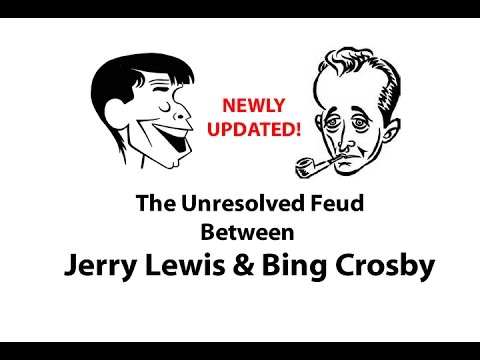

The Jerry Lewis – Bing Crosby Feud
Follow Up #2…The Jerry Lewis – Bing Crosby Feud
Yesterday, I posted video of Jerry taking over the camera at the 1952 Olympic Telethon hosted by Bob Hope and Bing Crosby. I mentioned that Crosby was avoiding Lewis because he was afraid Jerry would dislodge his hair piece.
Little did I know that that was the start of a huge feud between the two stars! Thanks to João Antonio Franz, here is a short video story on the origin with Jerry Lewis telling the story. Enjoy and share! -Bobby Ellerbee
https://www.youtube.com/watch?v=r0YdQLrR-0Q
NEW EDIT WITH ADDED MATERIAL — In a series of clips, Jerry Lewis recounts what sparked off his decades-long feud with Bing Crosby — which unfortunately was…
‘I Love Lucy’ 3 Headed Monster…Came From ‘Truth Or Consequences’
‘I Love Lucy’ 3 Headed Monster…Came From ‘Truth Or Consequences’
In researching the story I posted just before this on the first television game show with a live audience to be shot on film, I came across this interesting fact. The excerpted paragraph below is from ‘I Love Lucy’ editor Dann Cahn on the problem of editing film from 3 cameras and how the solution came from Ralph Edwards’ earlier pioneering efforts in this area.
“The amount of footage overwhelmed editors at the time, and they located a cutting-edge device that had been created for the quiz show ‘Truth Or Consequences’. When it was delivered to Desilu, Cahn called it a “monster” because it wouldn’t fit into the editing room so they put it in the prop room. “It was a Moviola with four heads — three for picture and one for sound,” Cahn told Editors Guild Magazine in 2006.”
This information is sadly from Mr. Cahn’s obituary with is at the link below. -Bobby Ellerbee
http://deadline.com/2012/11/dann-cahn-dead-editor-of-i-love-lucy-multicamera-tv-pioneer-376730/
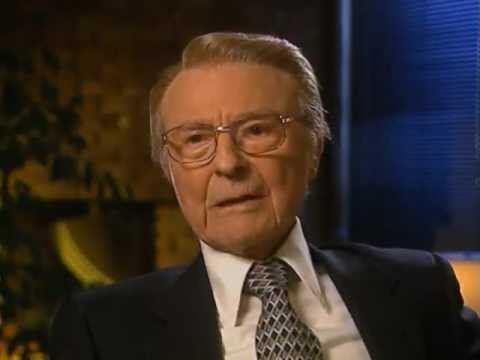

Historic Revelation! Ralph Edwards Sets The Record Straight!
Historic Revelation! Ralph Edwards Sets The Record Straight!
Two days ago, I posted an article from 1950 that claimed ‘You Bet Your Life’ was the first game show to be filmed before a live studio audience. Some had suggested here that ‘Truth Or Consequences’ was the first. I’ve done more research and it seems that Ralph Edwards was indeed the first to use a 3 camera, 35MM system to record his show.
This video is set to start at the point where Edwards describes this process and for the next 12 minutes, goes on to reveal not only the details, but how Desi Arnaz came to him for help with how to shoot ‘I Love Lucy’. For once and for all, this puts to rest the claim by many that ‘I Love Lucy’ was the first to do this.
Photos From The First Ever Network Telethon
Speaking Of Telethons…Here Are Photos From The First Ever
After posting the Martin & Lewis video from the 1952 Olympic Telethon, it occurred to me that it’s been a few years since we’ve seen these rare pictures from the first telethon in May of 1949.
Milton Berle hosted the 16 hour event on NBC and raised $100,000 for The Damon Runyon Memorial Cancer Fund. Among the celebrity guests…Dean Martin and Jerry Lewis. I think it’s safe to say that no one in the world has more experience and ability with teletoons than Mr. Lewis. Enjoy and share! -Bobby Ellerbee